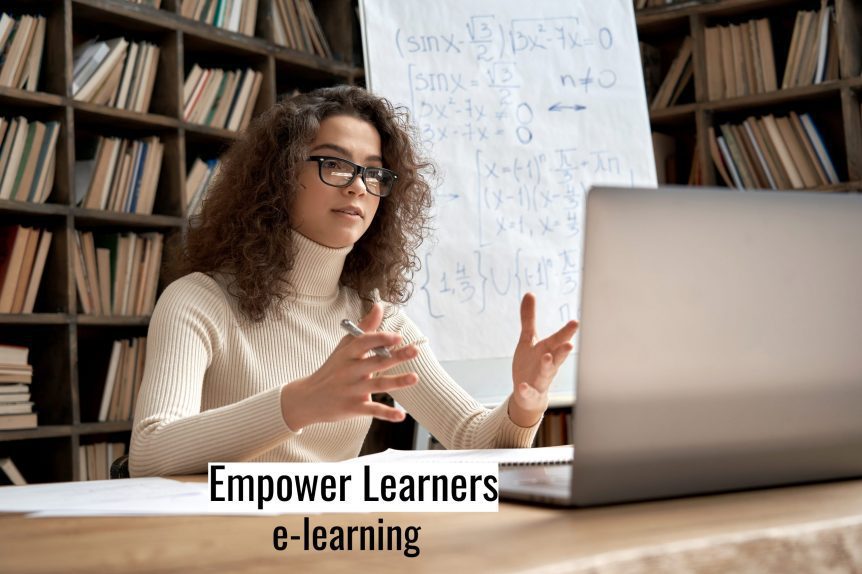How to Empower Learners and Improve Training Results in the Process
Empowered learners have a desire to learn and a willingness to improve professionally. This eagerness to learn can deliver better training results for your organisation as well as helping your business achieve its training goals.
So, it makes sense to take steps when developing e-learning and other training materials to empower learners as much as possible.
Understand the Makeup of an Empowered Learner
The starting point is to understand empowered learners, what makes them tick, and their motivations. It’s also important to understand how they typically learn, in work and out.
Below are some common traits of an empowered learner:
- Empowered learners learn from multiple sources and engage in self-directed learning. Often, this learning is very informal, fleeting, and on-demand.
- Empowered learners are used to turning to Google to solve problems with “How to…” searches and similar queries. They are also good at following the instructions they find in their search, whether it is watching a video, reading written instructions, or following instructions on an image.
- Active, motivated, and empowered learners also typically own and use multiple devices. In everyday life, they are used to having learning experiences on all the devices they use.
- Empowered learners expect ongoing learning experiences.
Create a Culture of Learning
Empowered learners thrive in organisations that have a culture of learning. You should foster and nurture a learning culture by making staff training and development a key part of your corporate strategy and a top business priority.
It is also important that you encourage, recognise, and reward training efforts made by your team.
Provide On-Demand Access to Courses
The traditional method of training pre-e-learning involved organising big training events that large groups of people would attend. The modern and more effective way is to make training available on demand.
This makes it possible for people to learn at times that best suit them, and it facilitates just-in-time learning. Just-in-time learning is one of the most effective training strategies you can use in your organisation.
Ensure E-Learning Courses are Mobile Friendly
Empowered learners in places like the UAE and Saudi Arabia have phones, they use their phones to find out information, and they expect content to be accessible on all devices they use, including their phones.
Reduce Your Focus on Assessment
Assessments are and will remain an important part of training strategies in most businesses. However, it is worth pivoting away from assessments as your only method of evaluating training outcomes.
In relation to empowered learners, an analysis of e-learning course usage and completion rates will give you important information, plus you should assess the real-world impacts of training. In other words, is productivity improving, are mistakes being reduced, etc.
Personalise Training Content and Create Self-Guided Courses
Empowered learners want the e-learning courses they complete to be personalised, so they are as relevant to their everyday experience as possible.
Personalising training courses is not just about content, however. Where possible and applicable, you should also create self-guided courses where learners have an input in the direction their training takes.
This could be training content that has two or more learner journeys that depend on the job role of the learner. Another example is to allow learners to skip modules where they are already familiar with the content. On the flip side, you can also create additional, optional content sections that learners can complete if they want to go into a topic in more detail than the content included in the main e-learning course.
Communicate Clearly with Learners
Communicating with your team is also a vital component of empowering learners. This communication should include information on courses and the support that is available, as well as details of the company’s training strategy and priorities.
Don’t just focus on the company, though, as it’s also important to address WIIFM – what’s in it for me.So, explain to your team why they should be interested in the e-learning course, what they can expect, and how they will benefit.
Keep Training Courses Up to Date
Creating on-demand learning content and self-guided courses that work on mobile devices and have a reduced focus on assessment doesn’t mean publishing and forgetting. Instead, you need to review the content of the e-learning courses in your training library regularly and proactively, updating information where necessary, removing anything that is no longer applicable, and making general improvements.
Utilise Mistake-Driven Learning
Mistake driven learning can be a very powerful training strategy. It involves creating situations where learners must answer questions and make decisions in the safe environment of an e-learning course, but where the consequences of those decisions are clearly explained.
So, learners are not only told they are right or wrong, but also why they are right or wrong and how each decision influenced the overall situation and end result.
While mistake driven learning is powerful, it is at its most effective when learners are actively engaged. Therefore, it is a strategy that can work exceptionally well with empowered learners.
Making the Most of the Opportunity of Empowered Learners
Empowered learners create an opportunity for your organisation to take training to the next level, where you harness and make the most of the willingness and enthusiasm of the people on your team.
So, it makes sense to develop training materials and e-learning content that appeals to empowered learners and encourages your team to continuously improve.

